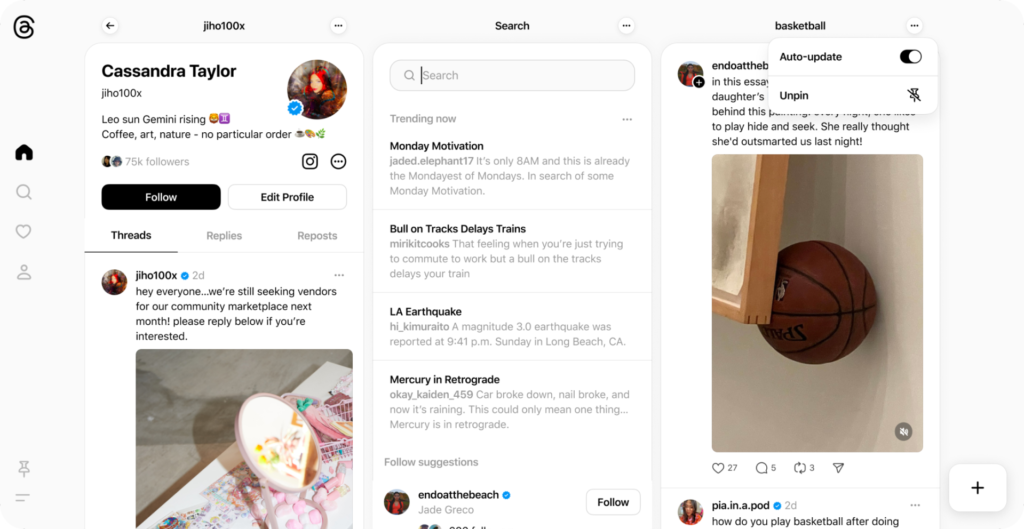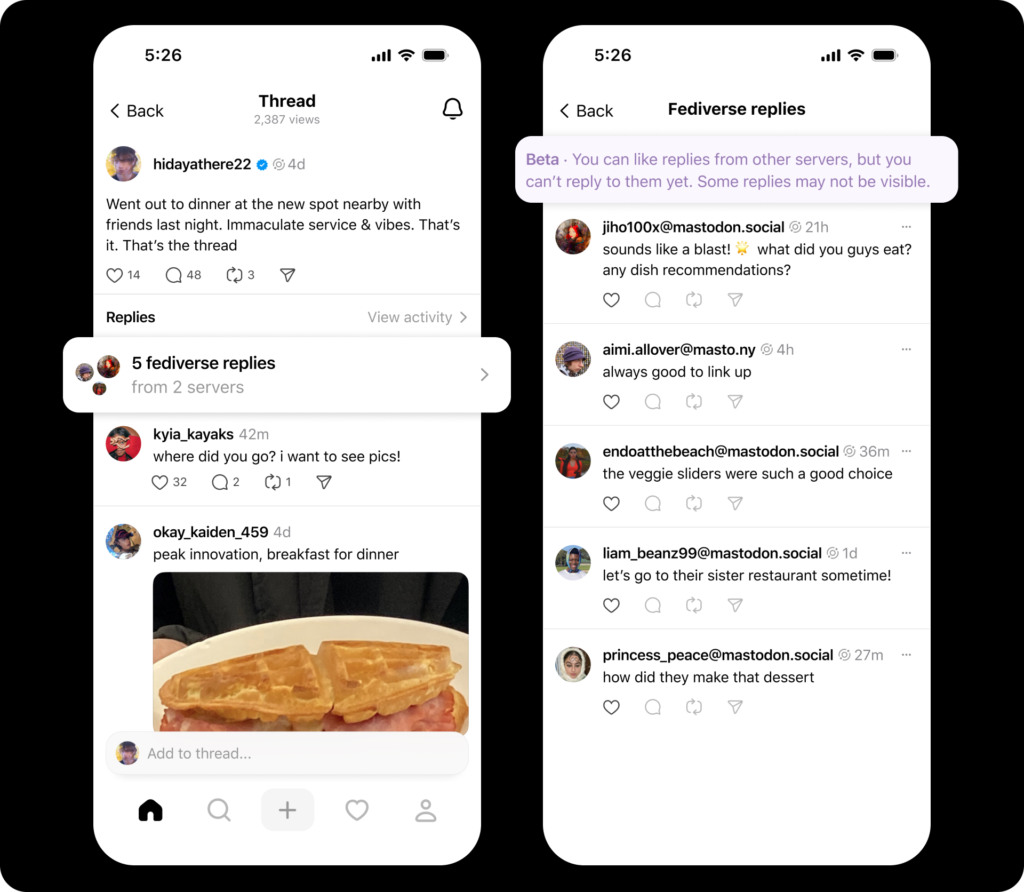It was supposed to change social media, dethroning Twitter and giving it a face marked by good relations, as opposed to the distortions of the platform recently run by Elon Musk. This was the goal of Threads, which, one year after its launch, has failed in its mission. At least for now, because the time to catch up is there, while there seems to be a lack of ideas to emerge in a range of social proposals that multiply but fail to undermine the dominance of Instagram, TikTok and YouTube. Yet unlike all its rivals, Threads has had its way thanks to its close ties with Instagram, the two social media sites that, together with Facebook and WhatsApp, are under Mark Zuckerberg’s control. With every image social subscriber having their profile on Threads ready to go, the latest entrant has reached 100 million users in just five days.
A record compared to all of its predecessors, but it is a pity that a year later, there are only 175 million users. This was said by the company itself, which provided the number of monthly active users, those who open the app at least once a month. However, Threads did not reveal the number of daily active users who log on daily to share thoughts, leave comments, and spread the day’s topics.
The direct comparison with X/Twitter, which,, despite Musk’s eccentricities,, has around 550 million monthly active users, suggests how far Threads still has to go to reach its goal. ‘We have to become bigger than X; otherwise, we will have failed.’ Not just anyone says this, but Adam Mosseri, Threads’ big boss.
A clear goal, but few ideas to achieve it
The former Instagram vice-president gave his first assessment of Threads in an interview with Platformer, demonstrating clear ideas about what not to do but much less certainty about how his creature can grow organically and steadily over time. Mosseri desires to make Threads the leading platform for news, but without offering space for politics. “Ours is not a place to show news and political opinions of people that users don’t follow, because I believe this option can create more problems than it can solve.”



The message is clear: Threads must not repeat the mistake made by Facebook, which for more than five years has become a land of conquest for disinformers who have filled the platform with fake news, polarising the debate and playing a strategic role in various election rounds. Net of the company’s choice, however, it seems difficult to understand how Threads can become the social of news if the most relevant type of news is excluded a priori: those that create interesting repartee, as long as they do not expire in vulgarity and offence.
One of Mosseri’s goals is to feature a series of vertical spaces dedicated to events that attract the masses, an ideal hook to increase interactions and talk about what is happening in the world in real-time. From the NBA to the Grammys, European football to the Met Gala, and the Super Bowl and Oscar night, the hope is to get people to follow, post and interact on topics of great impact on Threads. But there is already X/Twitter for that, so innovative features must be introduced to succeed. Otherwise, there is no reason why a user should leave the original to do the same thing on a social media clone.
Threads should be independent of Instagram
Another key point is to make Threads independent from Instagram, as you can still log into the platform with the same account and follow the same people, without forgetting that on Instagram, there is a constant repetition of posts and content from Threads, in the hope that someone will want to find out what is happening there.
Another surprising aspect of social media that aims to be a reference for news is the lack of a space where users can instantly discover the hottest topics of the moment. Without real-time monitoring of the most searched, re-posted, and commented content, all is lost, and there is no perception of the most relevant facts.
Faced with obvious shortcomings, Mosseri does not go beyond the need to ‘improve understanding of users’ interests in order to serve them better.’ It indicates that a good way to increase presence on social media is to respond to more than one publishes because not replying to those who comment on a post is tantamount to decreeing the death of the content. This is a shareable opinion, but it seems little to boost Threads’ big-power ambitions.



